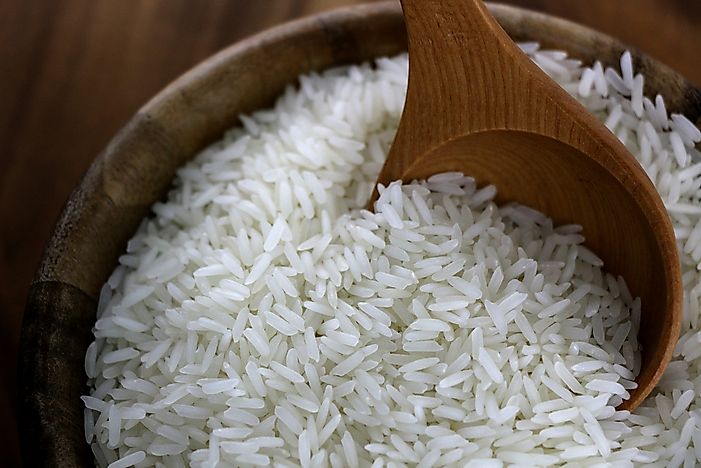
Brown rice has only the outer husk removed, leaving the germ and bran layer, and retaining most of the nutritional value, especially the B vitamins. The aromatic basmati has thus become a kitchen staple, accounting for 37 per cent of all the rice sold in the UK.
The Hindi word �basmati� means fragrant, and refers to the nutlike flavor and aroma of this small, but long grained rice. With its lyrical provenance � grown only in designated areas of India and Pakistan, in the foothills of the Himalayas and watered by rivers of their melting snow � this �prince of rice� is highly prized and distinctively flavoured. It is grown slowly, cropped only once a year and harvested by hand. Several varieties are now grown in the U.S., such as Texmati and Kasmati, and all are growing in popularity. (One U.S. company has made an effort to patent Basmati rice and trademark the name). Their flavor is very good, but not quite up to real imported Basmati.
Here at Blue Heaven Restaurant, we use brown Texmati or brown Basmati when available. Brown rice has only the outer husk removed, leaving the germ and bran layer, and retaining most of the nutritional value, especially the B vitamins. This minimal processing also produces a rice more flavorful than polished white rice.
When cooking, I use approximately 1 7/8 parts water to 1 part rice, with just a pinch of salt and a little olive oil. Respected cookbooks differ on these proportions, some recommending 1 1/2- 1 and others up to 2 - 1 ratios. Experiment, using the same brand and type of rice each time, and find the proportions which work best for you.
Basmati is a very aromatic, somewhat "nutty" rice that is aged considerably to spark optimum flavour.� The word "Basmati" literally means "perfumed one".� The name suits it well as it aims to prove itself with every meal. Please send your review to Indo Munch
Our parents may have put canned pineapple in their curries but we are a generation enthralled by authentic Asian cooking and ingredients. The aromatic basmati has thus become a kitchen staple, accounting for 37 per cent of all the rice sold in the UK. Since it is also more expensive than other long-grain rice, the promise of profit has also gone hand in hand with the temptation to indulge in, shall we say, a spot of mis-labelling. In 2004, the Food Standards Agency published the results of DNA tests on 363 samples, 17 per cent of which were found to have a non-basmati content of over 20 per cent, the maximum that was then allowed under the industry code of practice, while 9 per cent of samples had a non-basmati content higher than 60 per cent. For more information http://www.indomunch.com



